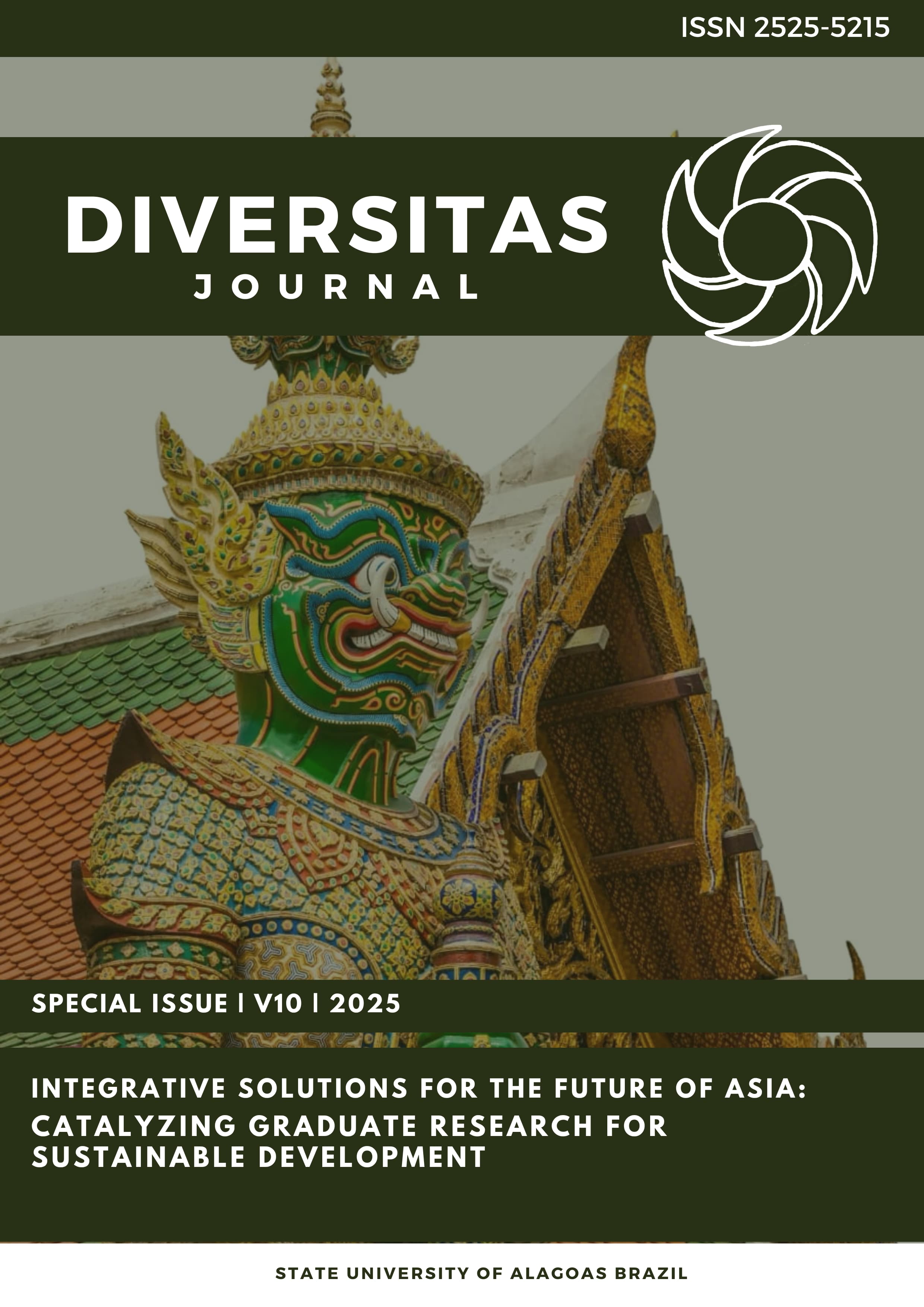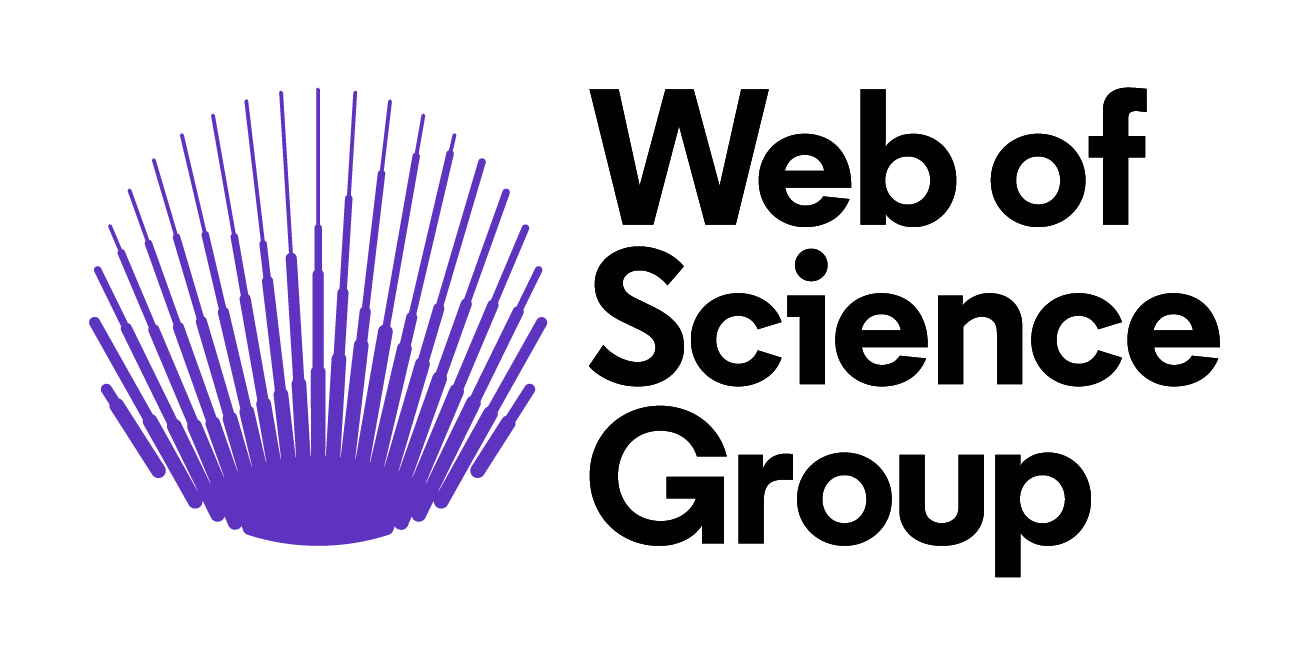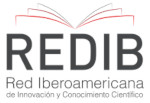Explorando la narrativa del estigma ocupacional de los aprendices de gestión hotelera: mecanismos de acción y caminos de desintegración
DOI:
https://doi.org/10.48017/dj.v10ispecial_1.3482Palabras clave:
training program, management, Systematic reviewResumen
Este estudio explora el marco de contenido interno, el mecanismo y la ruta de disolución de las narrativas de estigma ocupacional a través del análisis de narrativas de estigma, la integración de modelos teóricos de preservación de recursos y el uso de plantillas temáticas y reseñas de OTA en línea de hoteles. La metodología de este estudio adopta principalmente entrevistas narrativas en profundidad y utiliza análisis de plantillas para el procesamiento de datos. Los resultados de este estudio muestran que los capacitadores en gestión hotelera tienen una distribución de atributos de estigma ocupacional percibido en cuatro cuadrantes, dos rutas para la formación del estigma ocupacional percibido y un mecanismo más sistemático para la eliminación del estigma ocupacional. Este estudio amplía la investigación del estigma ocupacional en un solo contexto estático y explica la relación entre el estigma ocupacional percibido y las rutas de su disolución entre los aprendices de gestión hotelera. Tiene algunas implicaciones justas y prácticas para los módulos existentes en la gestión de recursos humanos de la hospitalidad, como el comportamiento organizacional positivo, la cultura organizacional, la capacitación y el cuidado de los empleados.
Métricas
Citas
Alarcon,P.,Wieland,B.,Mateus,A.L.P.,&Dewberry,C.(2014).Pig farmers’perceptions,attitudes,influences and management of information in the decision-making process for disease control.Preventive Veterinary Medicine,116(3),223–242.https://doi.org/10.1016/j.prevetmed.2013.08.004
Ashforth,B.E.,&Humphrey,R.H.(1993).Emotional Labor in Service Roles—The Influence of Identity.Academy of Management Review,18(1),88–15.https://doi.org/10.2307/258824
Ashforth,B.E.,&Kreiner,G.E.(1999).“How Can You Do It?”:Dirty Work and the Challenge of Constructing a Positive Identity.Academy of Management Review,24(3),413–434.https://doi.org/10.5465/amr.1999.2202129
Ashforth,B.E.,Kreiner,G.E.,Clark,M.A.,&Mel,F.(2007).Normalizing Dirty Work:Managerial Tactics For Countering Occupational Taint.Academy of Management Journal,50(1),149–174. https://doi.org/10.5465/amj.2007.24162092
Baran,B.E.,Rogelberg,S.G.,Carello Lopina,E.,Allen,J.A.,Spitzmüller,C.,&Bergman,M.(2012).Shouldering a silent burden:The toll of dirty tasks.Human Relations,65(5),597–626. https://doi.org/10.1177/0018726712438063
Bergman,M.E.,&Chalkley,K.M.(2007).“Ex”marks a spot:The stickiness of dirty work and other removed stigmas.Journal of Occupational Health Psychology,12(3),251–265.https://doi.org/10.1037/1076-8998.12.3.251
Bolton,S.C.(2005).Women’s Work,Dirty Work:The Gynaecology Nurse as‘Other.’Gender,Work&Organization,12(2),169–186.https://doi.org/10.1111/j.1468-0432.2005.00268.x
Braun,V.,&Clarke,V.(2006).Using thematic analysis in psychology.Qualitative Research in Psychology,3(2),77–101.https://doi.org/10.1191/1478088706qp063oa
Cacioppo,J.T.,&Gardner,W.L.(1999).Emotion.Annual Review of Psychology,50(1),191–214. https://doi.org/10.1146/annurev.psych.50.1.191
Chawla,N.,MacGowan,R.L.,Gabriel,A.S.,&Podsakoff,N.P.(2020).Unplugging or staying connected?Examining the nature,antecedents,and consequences of profiles of daily recovery experiences.Journal of Applied Psychology,105(1),19–39.https://doi.org/10.1037/apl0000423
Clifford,G.(1973).The interpretation of cultures:Selected essays.Collins,R.(2004).Interaction ritual chains.Princeton university press.Dick,P.(2005).Dirty work designations:How police officers account for their use of coercive force.Human Relations,58(11),1363–1390.https://doi.org/10.1177/0018726705060242
Preez,P.(1991).A science of mind:The quest for psychological reality(pp.viii,228).Academic Press.
Duberley,J.,Johnson,P.,&Cassell,C.(2012).Philosophies underpinning qualitative research.In Qualitative Organizational Research:Core Methods and Current Challenges(pp.15–34).
SAGE.Fan,J.,Zhang,M.,Wei,X.,Gursoy,D.,&Zhang,X.(2021).The bright side of work-related deviant behavior for hotel employees themselves:Impacts on recovery level and work engagement.Tourism Management,87,104375.https://doi.org/10.1016/j.tourman.2021.104375
Felsenthal,E.(2020,April 8).Front Line Workers Tell Their Own Stories in the New Issue of TIME.Time. https://time.com/collection/coronavirus-heroes/5816805/coronavirus-front-line-workers-issue/
Ghosh,A.,&Shum,C.(2019).Why do employees break rules?Understanding organizational rule breaking behaviors in hospitality.International Journal of Hospitality Management,81,1–10. https://doi.org/10.1016/j.ijhm.2019.02.003
Goffman,E.(1963).Stigma:Notes on the management of spoiled identity.Goffman E,editor.New Jersey:Penguin Books.
Goh,Dr.E.,&Okumus,F.(2020).Avoiding the hospitality workforce bubble:Strategies to attract and retain generation Z talent in the hospitality workforce.Tourism Management Perspectives,33,100603.https://doi.org/10/gmr2p3
Goh,E.,&Lee,C.(2018).A workforce to be reckoned with:The emerging pivotal Generation Z hospitality workforce.International Journal of Hospitality Management,73,20–28.https://doi.org/10/gd2pbn
Green,J.,&Thorogood,N.(2018).Qualitative Methods for Health Research.SAGE.Halbesleben,J.R.B.,&Bowler,W.M.(2007).Emotional exhaustion and job performance:The mediating role of motivation.Journal of Applied Psychology,92(1),93–106.https://doi.org/10.1037/00219010.92.1.93
Halbesleben,J.R.B.,&Buckley,R.M.(2004).Burnout in organizational life.Journal of Management,30(6),859–879.https://doi.org/10.1016/j.jm.2004.06.004
Halbesleben,J.R.B.,Neveu,J.-P.,Paustian-Underdahl,S.C.,&Westman,M.(2014).Getting to the“COR”:Understanding the Role of Resources in Conservation of Resources Theory.Journal of Management,40(5),1334–1364.https://doi.org/10/bb79
Hennekam,S.,Ladge,J.,&Shymko,Y.(2020).From zero to hero:An exploratory study examining sudden hero status among nonphysician health care workers during the COVID-19 pandemic.Journal of Applied Psychology,105(10),1088–1100.https://doi.org/10/ghqp5t
Hobfoll,S.E.(1989).Conservation of Resources—A New Attempt at Conceptualizing Stress.American Psychologist,44(3),513–524.https://doi.org/10.1037/0003-066x.44.3.513
Hobfoll,S.E.(2001a).Conservation of resources:A rejoinder to the commentaries.Applied Psychology-an International Review-Psychologie Appliquee-Revue Internationale,50(3),419–421. https://doi.org/10.1111/1464-0597.00064
Hobfoll,S.E.(2001b).The influence of culture,community,and the nested-self in the stress process:Advancing Conservation of Resources theory.Applied Psychology-an International Review-Psychologie Appliquee-Revue Internationale,50(3),337–370.https://doi.org/10.1111/1464-0597.00062
Hobfoll,S.E.(2011).Conservation of resource caravans and engaged settings. Journal of Occupational and Organizational Psychology,84(1),116–122.https://doi.org/10/df5jnt
Hobfoll,S.E.,Halbesleben,J.,Neveu,J.-P.,&Westman,M.(2018).Conservation of Resources in the Organizational Context:The Reality of Resources and Their Consequences. Annual Review of Organizational Psychology and Organizational Behavior,5(1),103–128.https://doi.org/10/gfgv4t
Hughes,E.C.(1951).Work and the self.In J.H.Rohrer&M.Sherif(Eds.).In Social psychology at the crossroads(pp.313–323).NY:Harper&Brothers.Hughes,E.C.(1962).Good People and Dirty Work.Social Problems,10(1),3–11.https://doi.org/10.2307/799402
Kreiner,G.E.,Ashforth,B.E.,&Sluss,D.M.(2006).Identity dynamics in occupational dirty work:Integrating social identity and system justification perspectives.Organization Science,17(5),619–636. https://doi.org/10.1287/orsc.1060.0208
Goh,E.,&Okumus,F.(2020).Avoiding the hospitality workforce bubble:Strategies to attract and retain generation Z talent in the hospitality workforce.Tourism Management Perspectives, 33, 100603.
Liao,H.,&Chuang,A.(2007).Transforming service employees and climate:A multilevel,multisource examination of transformational leadership in building long-term service relationships. Journal of Applied Psychology,92(4),1006–1019.https://doi.org/10/fg3kjx
Lincoln,Y.S.,&Guba,E.G.(1985).Naturalistic Inquiry.SAGE.Link,B.G.,&Phelan,J.C.(2001).Conceptualizing Stigma.Annual Review of Sociology,27(1),363–385.https://doi.org/10/cr3rb3
Lugosi,P.(2019).Deviance,deviant behaviour and hospitality management:Sources,forms and drivers.Tourism Management,74,81–98.https://doi.org/10.1016/j.tourman.2019.02.014
Luthans,F.,Avolio,B.J.,Avey,J.B.,&Norman,S.M.(2007).Positive Psychological Capital:Measurement and Relationship with Performance and Satisfaction. Personnel Psychology,60(3),541572.
Maznevski,M.L.,&Chudoba,K.M.(2000).Bridging Space Over Time:Global Virtual Team Dynamics and Effectiveness. Organization Science,11(5),473–492.https://doi.org/10.1287/orsc.11.5.473.15200
Melamed,S.,Shirom,A.,Toker,S.,Berliner,S.,&Shapira,I.(2006).Burnout and risk of cardiovascular disease:Evidence,possible causal paths,and promising research directions. Psychological Bulletin,132(3),327–353.https://doi.org/10.1037/0033-2909.132.3.327
Miller,C.T.(2005).Social Psychological Perspectives on Coping With Stressors Related to Stigma. In Stigma and Group Inequality(1st Edition,p.24).Psychology Press. https://www.taylorfrancis.com/chapters/edit/10.4324/9781410617057-7/social-psychological-perspectives-coping-stressors-related-stigma-carolmiller
Mura,P.,&Sharif,S.P.(2017).Narrative analysis in tourism:A critical review. Scandinavian Journal of Hospitality and Tourism,17(2),194–207.https://doi.org/10/gmr5rz
Newman,A.,Ucbasaran,D.,Zhu,F.,&Hirst,G.(2014).Psychological capital:A review and synthesis.Journal of Organizational Behavior,35(S1)120–S138.https://doi.org/10/bqq6
Ng,T.W.H.,&Feldman,D.C.(2012).Employee voice behavior:A meta-analytic test of the conservation of resources framework. Journal of Organizational Behavior,33(2),216–234.https://doi.org/10.1002/job.754
Norton,M.I.,Dunn,E.W.,Carney,D.R.,&Ariely,D.(2012).The persuasive “power” of stigma? Organizational Behavior and Human Decision Processes,117(2),261–268. https://doi.org/10.1016/j.obhdp.2011.08.002
Nimri,R.,Kensbock,S.,Bailey,J.,Jennings,G.,&Patiar,A.(2020).Realizing dignity in housekeeping work:Evidence of five star hotels. Journal of Human Resources in Hospitality&Tourism,19(3),368–387. https://doi.org/10.1080/15332845.2020.1737770
Parker,R.,&Aggleton,P.(2003).HIV and AIDS-related stigma and discrimination:A conceptual framework and implications for action. Social Science&Medicine,57(1),13–24.https://doi.org/10/d5cvtg
Pattinson,S.,&Preece,D.(2014).Communities of practice,knowledge acquisition and innovation:A case study of science-based SMEs. Journal of Knowledge Management,18(1),107–120. https://doi.org/10/f5wf54
Phung,K.,Buchanan,S.,Toubiana,M.,Ruebottom,T.,&Turchick-Hakak,L.(2021).When Stigma Doesn’t Transfer:Stigma Deflection and Occupational Stratification in the Sharing Economy. Journal of Management Studies,58(4),1107–1139.https://doi.org/10.1111/joms.12574
Pinel,E.C.(1999).Stigma consciousness:The psychological legacy of social stereotypes. Journal of Personality and Social Psychology,76(1),114–128.https://doi.org/10.1037/0022-3514.76.1.114
Pinel,E.C.,&Paulin,N.(2005).Stigma consciousness at work. Basic and Applied Social Psychology,27(4),345–352.https://doi.org/10.1207/s15324834basp2704_7
Podsakoff,N.P.,LePine,J.A.,&LePine,M.A.(2007).Differential challenge stressor-hindrance stressor relationships with job attitudes,turnover intentions,turnover,and withdrawal behavior:A metaanalysis.Journal of Applied Psychology,92(2),438–454.https://doi.org/10/ddcdgw
Pontikes,E.,Negro,G.,&Rao,H.(2010).Stained Red:A Study of Stigma by Association to Blacklisted Artists during the“‘Red Scare’”in Hollywood,1945 to 1960.American Sociological Review,75(3),456–478. https://doi.org/10.1177/0003122410368929
Felsenthal,E.(2020,April 8). Front Line Workers Tell Their Own Stories in the New Issue of TIME. Time.https://time.com/collection/coronavirus-heroes/5816805/coronavirus-front-line-workers-issue/
Mejia,C.,Pittman,R.,Beltramo,J.M.,Horan,K.,Grinley,A.,&Shoss,M.K.(2021).Stigma&dirty work:In-group and out-group perceptions of essential service workers during COVID-19.International Journal of hospitality management,93,102772.
E.Ashforth,B.,E.Kreiner,G.,A.Clark,M.,&Fugate,M.(2007).Normalizing dirty work:Managerial tactics for countering occupational taint.Academy of Management journal,50(1),149-174.
Ghosh,A.,&Shum,C.(2019).Why do employees break rules?Understanding organizational rule-breaking behaviors in hospitality.International Journal of Hospitality Management,81,1-10.
Baldissari,C.,Andrighetto,L.,&Volpato,C.(2014).When work does not ennoble man:Psychological consequences of working objectification.Testing,Psychometrics,Methodology in Applied Psychology,3,327–339. https://doi.org/10.4473/tpm21.3.7
Shigihara,A.M.(2018).“(Not)forever talk”:restaurant employees managing occupational stigma consciousness.Qualitative Research in Organizations and Management:An International Journal,13(4),384-402.
Rafaeli,A.,&Sutton,R.I.(1990).Busy Stores and Demanding Customers:How Do They Affect the Display of Positive Emotion?Academy of Management Journal,33(3),623–637.https://doi.org/10/gmr5r4
Richman,L.S.,&Leary,M.R.(2009).Reactions to Discrimination,Stigmatization,Ostracism,and Other Forms of Interpersonal Rejection:A Multimotive Model.Psychological Review,116(2),365–383. https://doi.org/10.1037/a0015250
Semadeni,M.,Cannella,A.A.,Fraser,D.R.,&Lee,D.S.(2008).Fight or flight:Managing stigma in executive careers. Strategic Management Journal,29(5),557–567. https://doi.org/10.1002/smj.661
Shantz,A.,&Booth,J.E.(2014).Service employees and self-verification:The roles of occupational stigma consciousness and core self-evaluations. Human Relations,67(12),1439–1465. https://doi.org/10.1177/0018726713519280
Nimri,R.,Kensbock,S.,Bailey,J.,Jennings,G.,&Patiar,A.(2020).Realizing dignity in housekeeping work:Evidence of five star hotels. Journal of Human Resources in Hospitality&Tourism,19(3),368–387. https://doi.org/10.1080/15332845.2020.1737770
Tajfel,H.(1978).Intergroup behaviour:II.Group perspectives.In Introducing social psychology:An analysis of individual reaction and response(pp.423–446).Penguin Press.Toyoki,S.,&Brown,A.D.(2014).
Stigma,identity and power:Managing stigmatized identities through discourse. Human Relations,67(6),715–737.https://doi.org/10.1177/0018726713503024
Wildes,V.J.(2005).Stigma in food service work:How it affects restaurant servers'intention to stay in the business or recommend a job to another.Tourism and Hospitality Research,5(3),213-233.
Yussen,S.R.,&Ozcan,N.M.(1996).The development of knowledge about narratives. Issues in Education:Contributions from Educational Psychology,2,1–68. https://experts.umn.edu/en/publications/the-development-of-knowledge-about-narratives
Descargas
Publicado
Cómo citar
Número
Sección
Licencia
Derechos de autor 2025 Yu Zhu Zeng, Daryl Ace Cornell

Esta obra está bajo una licencia internacional Creative Commons Atribución 4.0.
O periodico Diversitas Journal expressa que os artigos são de unica responsabilidade dos Autores, conhecedores da legislação Brasileira e internacional. Os artigos são revisados pelos pares e devem ter o cuidado de avisar da possível incidencia de plagiarismo. Contudo o plagio é uma ação incontestavel dos autores. A Diversitas Journal não publicará artigos com indicios de Plagiarismos. Artigos com plagios serão tratados em conformidade com os procedimentos de plagiarismo COPE.
A violação dos direitos autorais constitui crime, previsto no artigo 184, do Código Penal Brasileiro:
“Art. 184 Violar direitos de autor e os que lhe são conexos: Pena – detenção, de 3 (três) meses a 1 (um) ano, ou multa. § 1o Se a violação consistir em reprodução total ou parcial, com intuito de lucro direto ou indireto, por qualquer meio ou processo, de obra intelectual, interpretação, execução ou fonograma, sem autorização expressa do autor, do artista intérprete ou executante, do produtor, conforme o caso, ou de quem os represente: Pena – reclusão, de 2 (dois) a 4 (quatro) anos, e multa.”


















